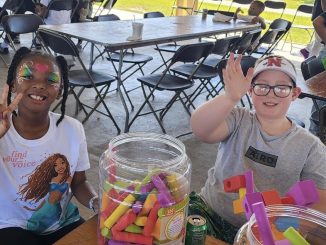
February is a great time to plant hardy fruit trees, says horticulturist
Local nurseries should have an excellent selection of these plants newly arrived for planting in late winter and early spring. But you need to pay careful attention to selecting, planting, growing conditions and care these plants need.As a rule, plants we grow for fruit require full sun, excellent drainage and room to grow. Find out the mature size and proper spacing of the fruits you want to grow, and take all of this into consideration when you place them in your landscape.
The varieties of fruits you choose must be adapted to the mild winters of the Deep South. Always check that the cold weather you normally get in your area meets the chilling hours the fruit requires. (Chilling hours are the accumulated hours below 45 degrees that occur during winter.) This will vary depending on where you garden in the state – north Louisiana gets more chilling hours than south Louisiana.
You must also know whether the fruit you want to grow is self-fruitful or requires a pollinator. Self-fruitful plants will pollinate themselves, and you only need to plant one. Plants that require a pollinator will not pollinate themselves, and another plant of the same type of fruit – but a different variety – must be planted for cross-pollination and reliable production to occur.
The fig is one of the most commonly planted and easily grown fruit trees in our state. The Celeste fig is the variety most gardeners grow because of its reliability. Other good fig varieties for Louisiana include Southeastern Brown Turkey (fruit similar to Celeste but more prone to splitting and souring), Florentine (large yellow fruit).
Fruiting pears produce beautiful displays of white flowers in February and delicious fruit in August. The pear variety Pineapple is popular for its quality fruit (better for cooking than fresh eating) and resistance to fire blight. Other pears to consider include Baldwin, Garber, Orient, Kieffer, Biscamp and LeConte. It is best to plant two different varieties to ensure pollination and good fruit production.
Japanese persimmons are low-maintenance fruit trees that rarely, if ever, need to be sprayed. The major problem is fruit drop, which is generally worst the first five years after you plant the tree and then improves as the tree matures. Recommended Japanese persimmons include Taninashi, Hachiya (harvest these two varieties when the fruit is very soft), Tamopan, Fuyu and Suruga (these three varieties are non-astringent and can be eaten when the flesh is crisp).
Blackberries – or brambles – are relatively care-free to grow with the major task being annual pruning after harvest. Trailing types, such as boysenberries, dewberries and youngberries, must be trained to a trellis or other support. Erect types include Navaho and Arapaho (these two are thornless), as well as Brazos, Shawnee and Rosborough. Blackberries are self-fruitful.
Citrus trees are commonly planted in south Louisiana (although adventurous gardeners in north Louisiana are giving them a try these days) and are self-fruitful. Easily grown, citrus have a variety of pest problems but none is generally too bad.
Muscadine grapes are native to our area and require a moderate amount of maintenance. The vines must be supported, and the annual pruning, in which up to 90 percent of the previous year’s grow is removed, can be quite a chore. Self-fertile types can be planted individually and include Carlos, Cowart (considered one of the best), Dearing, Magnolia and Southland.
Higher-maintenance fruits include apples, plums, peaches, bunch grapes and nectarines. These fruit trees generally require more pruning and spraying than those already mentioned to produce here successfully.
– Dan Gill, LSU horticulturist




Be the first to comment